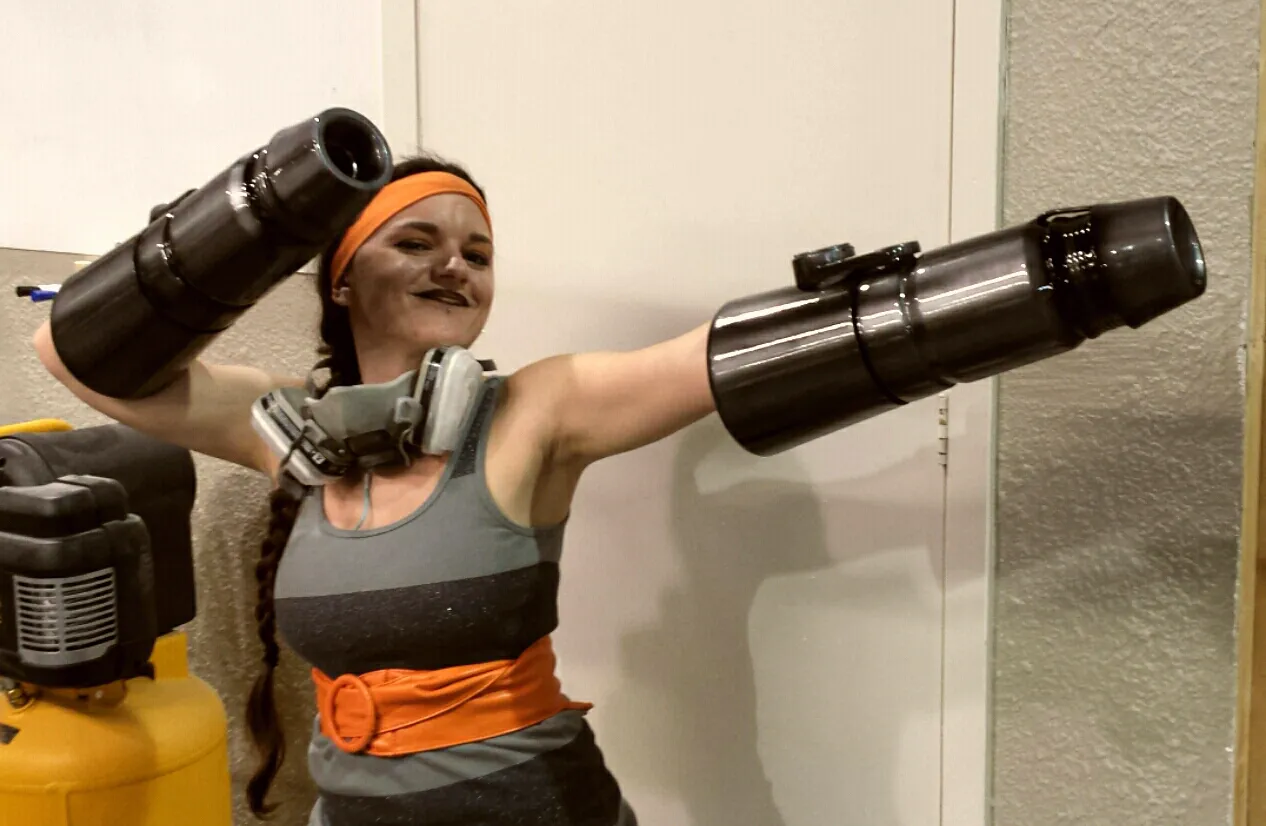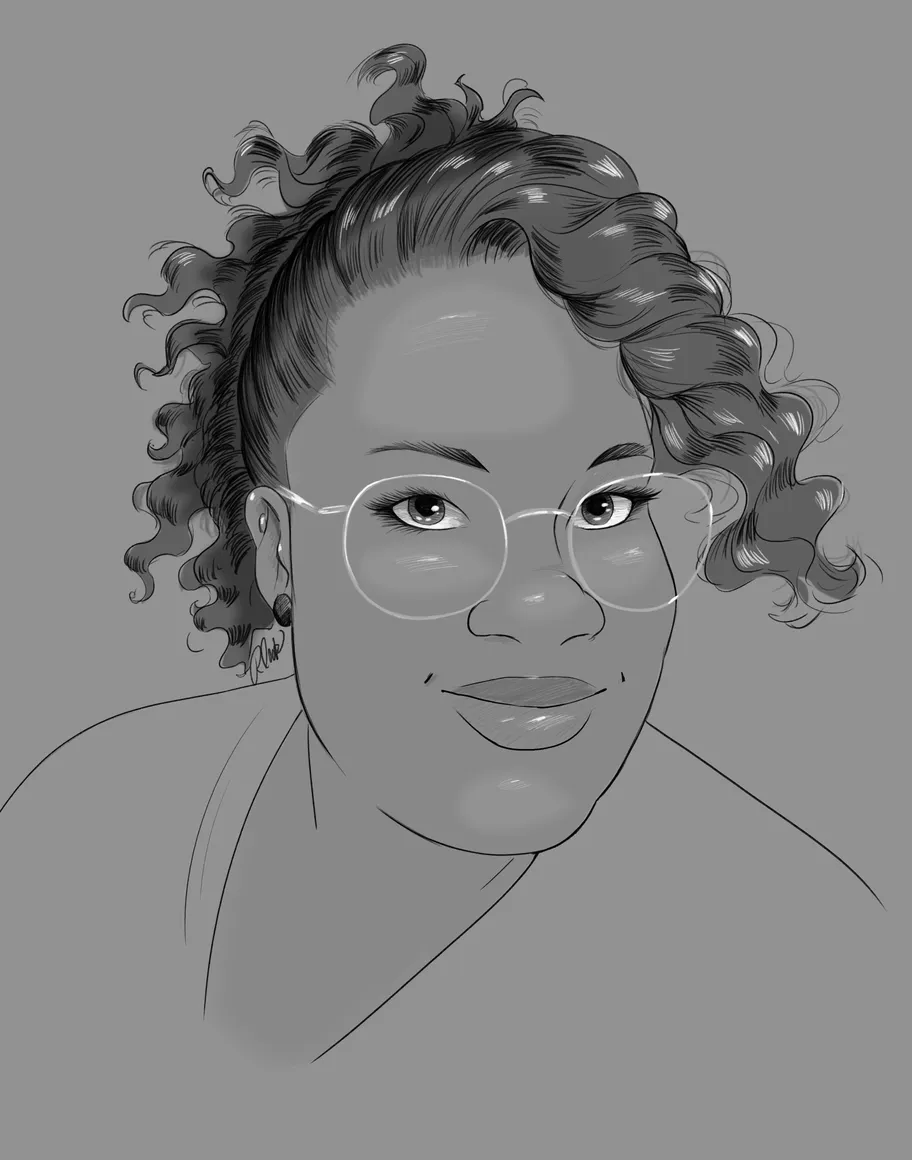Costumer Daks Chaya says when she was younger, telling people she wanted to be an artist sometimes led to less-than-supportive comments.
“‘Oh, art degree, you’ll be flipping burgers,’” she says she heard.
Instead, for the past five years, Chaya has made a living with her artistic credentials and talent, aging and dying clothes to dress actors playing bedraggled zombies on television shows.

Daks Chaya is on set early in her career as an ager/dyer in the costume department. Photo courtesy of Daks Chaya.
But now Chaya is facing a future where a show like “Fear the Walking Dead” — one of her recent credits — won’t need a zombie-rag creator. Why bother if the show can simply use generative artificial intelligence (AI) to create digital replicas of all the background actors playing the undead? Digital replicas don’t need new costumes.
“I've got this respectable job now, with an art degree,” says Chaya. “But now you're trying to take that away.”
Chaya and her costumer colleagues, plus many other other workers such as lighting technicians and animators, are considering how generative AI could help or hurt their careers as striking workers, actors, and the studios continue debating the technology. Whatever deal the WGA and SAG-AFTRA reach with studios on AI could shape the direction for the rest of Hollywood, affecting the jobs of thousands of workers who are not currently negotiating about the issue.
The background actors Chaya works with are considered the most vulnerable to AI. SAG-AFTRA claims the studios want to pay actors a low daily rate to take scans of them for future use, something the studios dispute. Some actors say they have already been scanned on set. Fewer background actors on sets means fewer costume, hair, and makeup artists are needed, as well as less catering and less management for fewer actors.
Crew members like Chaya don’t need to worry about their jobs disappearing overnight, says Charlie Fink, a professor at Chapman University’s Dodge College of Film and Media Arts who writes about Hollywood and emerging technology for Forbes. Fink expects these changes and more could happen gradually over the next decade in Hollywood.
In the long run, “I don't know that there will be less work,” says Fink. “But there will be work that requires new skills.”
The workforce has already adapted to significant technological changes in Hollywood, Fink points out.
For instance, computer-generated imagery has already replaced actors in most large crowd scenes. The “Star Wars” spin-off “The Mandalorian” used virtual sets instead of green screens. Filmmakers are already creating AI-generated films.
Fink expects artists will use the technology to have total control over their vision. “[AI] has transformative potential, and you can fear it, but don't sit out,” says Fink. “And don't deny yourself the benefits of it.”
Ryan Morgan, a lighting console programmer, is taking that advice and looking for ways AI can keep his skills relevant. The LED virtual backdrops used on “The Mandalorian” “made my life easier,” says Morgan, an electrician on the show. “But it also shows you that my job is replaceable.” He’s learning to use generative AI during pre-production to create models of set lighting instead of hand-drawn diagrams.
As the WGA and SAG-AFTRA strike negotiations have stalled partly on the issue of AI, other industry unions are preparing to negotiate over it when their contracts are up.
The International Alliance of Theatrical Stage Employees (IATSE), the union representing workers like Morgan and Chaya, created a commission on AI in May, which released a set of core principles for proactively approaching the challenges and opportunities presented by the technology. The union also joined other labor representatives at the White House in July for a listening session about the implications for the workforce.
The Animation Guild also created a task force to address AI, which is already in use in that corner of the industry.
In January, Netflix distributed “Dog and Boy,” an animated short produced in Japan that used AI-generated background art. Then Disney released the Marvel TV show “Secret Invasion” in June, which included AI-generated opening credits.

Sharifa McCauley, a production coordinator in animation, would like to work her way up to a producer role, but AI could change her career trajectory. Illustration courtesy of Robby Cook.
Animators and visual effects artists expressed their disappointment and raised concerns about both programs. Those examples sent a chilling effect through the industry, says Sharifa McCauley, a member of the Animation Guild’s AI task force and production coordinator on the show “Lower Decks.” McCauley also says she’s worried AI-driven programs could replace the need for her scheduling and project management duties, but is hoping for the best.
“There's always change, and it does suck. I know that's not very eloquent, but it does suck,” she says. “But I roll with the punches, and I know that it's going to be okay in the end because it's been a hot union summer, and workers are standing up for themselves.”
